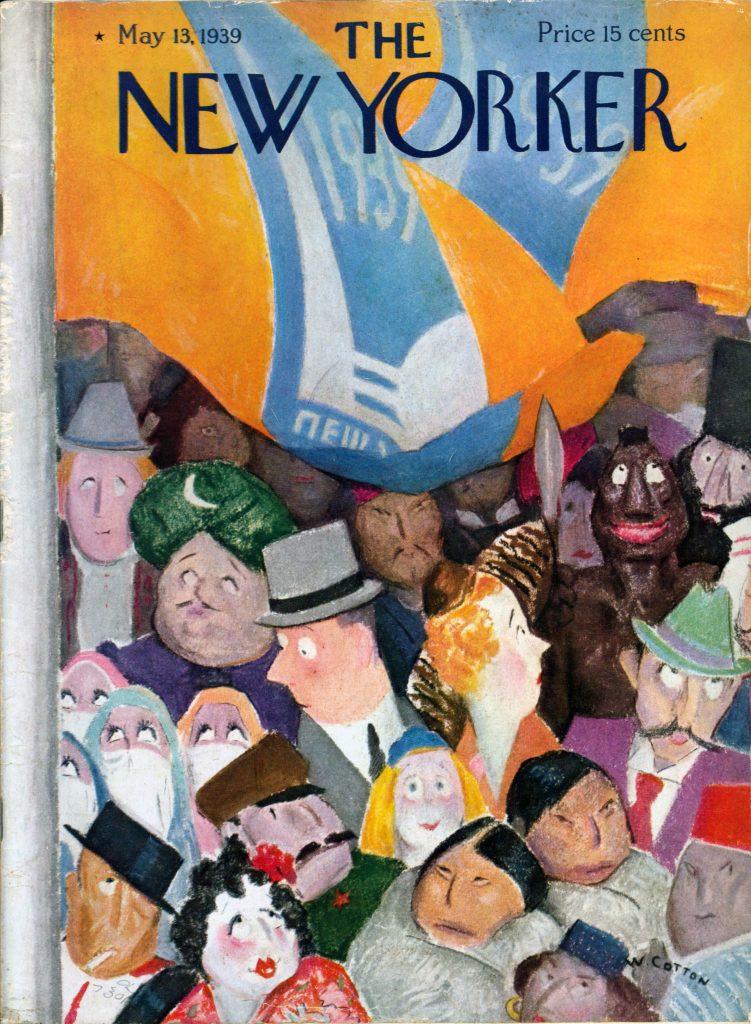
The E.B. White Collection
By Kevin Grace, University Archivist and Head of the Archives and Rare Books Library

So you want to be a writer? Whatever for?? Has someone unduly directed you toward that endeavor? Author Flannery O’Connor once offered her own opinion on budding writers: “Everywhere I go, I’m asked if the universities stifle writers. My opinion is that they don’t stifle enough of them.” A bit harsh, that, but there was encouragement of a sort from Dorothy Parker, known more for her witticisms today than her short stories and poetry: “If you have any young friends who aspire to become writers, the second greatest favor you can do them is to present them with copies of The Elements of Style. The first greatest, of course, is to shoot them now, while they’re happy.”
Parker was referring to what is commonly referred to as “Strunk and White,” more completely as The Elements of Style by William Strunk Jr. and E.B. White, the most famous book in America on how to write well. From high school and college, we remember the book’s most notable rules: Omit needless words. Use active voice. Use parallel construction on parallel concepts. Though not without its critics, “Strunk and White” has survived the decades since its first publication in 1920 because of its common sense approach to simple writing (a copy of this original book is in the Rare Books Collection? SpeCol RB PE1408..S772). Dorothy Parker was a friend of White’s, both deeply ensconced in New York literary circles, and White a longtime writer for The New Yorker, to which Parker often contributed. In Parker’s view, if you’re is going to live an unhappy life as a writer, you can do no better than having Strunk and White as a guide to effective prose.

And while most of us were first exposed as children to White’s writing through classics like Charlotte’s Web and Stuart Little, we came to see his breadth as an author through his voluminous contributions to the pages of The New Yorker and the anthologies of his articles. And, there is a University of Cincinnati connection in his work. The William Strunk of Strunk and White’s The Elements of Style was born and raised in Cincinnati and was an 1890 graduate of UC. He went on to a long and distinguished teaching career at Cornell University in the English Department and White was one of his students. William Strunk initially wrote a small pamphlet on style in 1918 as a guide for his students, and privately printed it in 1919. In 1920, Harcourt, Brace and Howe published it for wide distribution, and in 1935, Strunk partnered with Edward A. Tenney to author an expanded edition.

Along came White. In a 1957 article for The New Yorker, White reminisced about Strunk and the guide, and Macmillen convinced him to revise and edit a new edition in 1959. The rest is composition class history. The small, simple Strunk and White has gone through more editions since ’59, including an illustrated edition in 2005. In 2016, the Open Syllabus Project determined the book was the most frequently assigned text in American university syllabi after calculating more than 900,000 citations in over a million syllabi.
In 1986, collector Larry Faris donated his collection of E.B. White editions and first appearances to the University of Cincinnati, where they are part of the collections in the Archives & Rare Books Library. Filling five archival boxes, the collection contains multiple editions of White’s children’s books, anthologies, and collected works, as well as his pieces in The New Yorker, Holiday, Harper’s, and other magazines, more than 70 books and magazines in all. Taken as a whole, the collection documents the career of White and his growth as a writer, and while it is not a unique body of material, the aspiring writer gets a clear sense of the dedication White had in pursuing his craft. The collection is accessioned as US-01-06, and the particulars of the titles and editions are available in the Library Catalog. For more information, contact the Archives & Rare Books Library.
So if you have those writerly aspirations, E.B. White is a good guide along the path. His somewhat curmudgeonly demeanor and his gentle humor were hallmarks of 20th century American literature. Be wary, however, of writing humor yourself. And tread lightly if you have to explain yourself. As White said, “Analyzing humor is like dissecting a frog. Few people are interested and the frog dies of it.”


